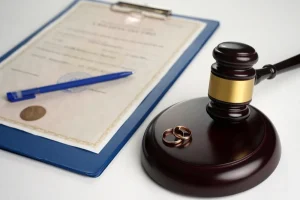Divorce can be complicated, especially if one spouse refuses to participate in the process. In New York State (NYS), you do not need your spouse’s consent to get a divorce. As long as you meet the legal requirements, you can proceed even if your spouse is uncooperative or refuses to sign any documents.
This article analyzes the legal options for divorcing a spouse who doesn’t agree, including no-fault divorce, default divorce, and contested divorce procedures.
1. Can You Get a Divorce Without Your Spouse’s Consent?
Yes. In New York, a spouse cannot prevent a divorce by refusing to sign paperwork or participate in the process.
There are two main ways to proceed when a spouse does not agree:
- Default Divorce – If the spouse ignores the divorce papers.
- Contested Divorce – If the spouse actively fights the divorce in court.
New York allows no-fault divorce, meaning you do not need to prove wrongdoing—just that the marriage has been irretrievably broken for at least six months.
2. Default Divorce: If Your Spouse Ignores the Papers
If your spouse doesn’t respond after being properly served with divorce papers, you can request a default judgment.
Steps to Obtain a Default Divorce:
- File for Divorce
- Submit a Summons with Notice or Summons and Complaint to the Supreme Court in the county where you or your spouse live.
2. Serve Your Spouse
- Legally deliver the divorce papers to your spouse within 120 days of filing.
- A third party (not you) must serve the documents.
3. Wait for a Response
- The spouse has 20 days to respond (if served in NY) or 30 days (if served out of state).
4. Request a Default Judgment
- If the spouse does not respond, file for a default divorce.
- Submit final paperwork for the judge to sign.
How Long Does a Default Divorce Take?
- Typically 3 to 6 months, depending on court processing times.
3. Contested Divorce: If Your Spouse Fights the Divorce
If your spouse actively opposes the divorce, it becomes a contested divorce, requiring:
- Court hearings
- Negotiations or mediation
- Potential trial before a judge
Steps in a Contested Divorce:
- Filing and Serving Divorce Papers
- Spouse Files an Answer (opposing the divorce or its terms)
- Court Hearings and Negotiations (mediation or settlement talks)
- Trial (if no agreement is reached)
Contested divorces take longer—usually 1 to 3 years—and are more expensive due to legal fees.
4. Conclusion
If your spouse does not agree to the divorce, you can still proceed:
- If they ignore the case, you can get a default divorce.
- If they fight the case, the court will decide in a contested divorce.
New York’s no-fault divorce laws ensure that one spouse cannot block a divorce, making it possible to legally end the marriage even if the other spouse refuses to cooperate.




